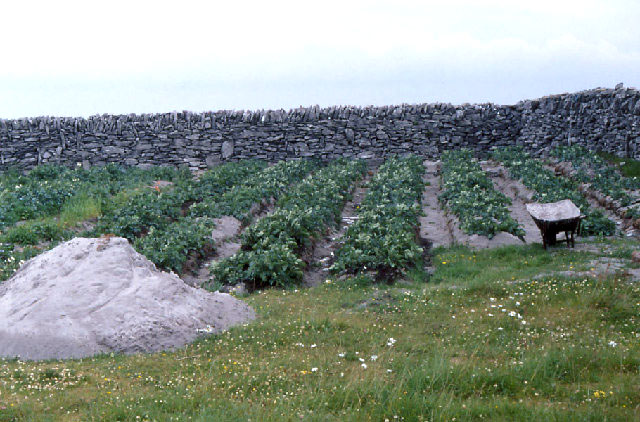Seaweed fertilisers

Picture: Inis Oírr, Aran Islands, Ireland: lazy beds with potatoes. This is still the method employed (of necessity) to cultivate roots crops, using seaweed and sand in ridges within fields encircled with stone walls. Note the pile of sea-sand being used to make the beds. Picture © Dr Charles Nelson and licensed for reuse under a Creative Commons Licence
Seaweeds are normally not used on heavy soils, only as a surface dressing on light, sandy soils. Kelps, and many other seaweeds, have few insoluble fibres (they have little or no cellulose) and if dug into heavy soils in quantity will form an impermeable layer becasue of the large amounts of seaweed gels that are water soluble. So, if you are growing crops like potatoes on a light soil in lazy beds (raised beds to increas drainage) you can spread the fronds over the surface and they will provide nutrients and grow-promoting substances; it is also likely that some of the material that washes out of seaweed has anti-fungal and other properties. In very light soils like that shown above on the Aran Islands, layering the kelp can help
You should be aware that drift seaweed is available to all in most areas, but cutting seaweed in some countries is subject to license and turbary rights (inherited rights like turf and sheep grazing; http://en.wikipedia.org/wiki/Turbar) in certain areas, mostly in the SW W and NW of Ireland, and W Scotland and outlying island. In Ireland the UK, cutting or gathering may also be restricted in various ways on sites of scientific importance.





